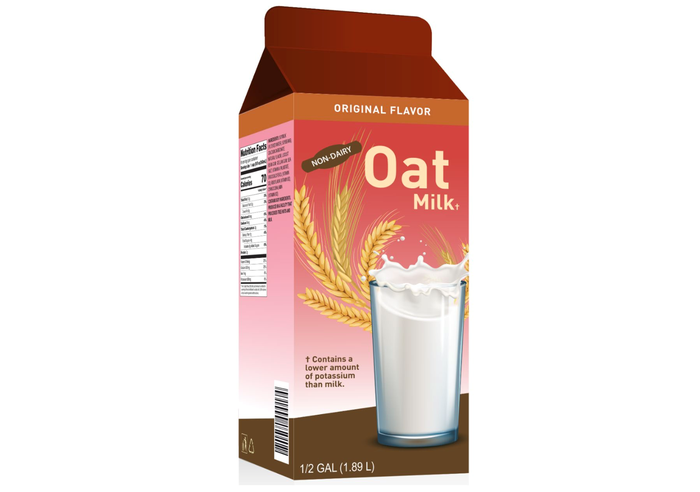Dairy, plant-based milk producers both take issue with FDA draft guidelines
New FDA labeling recommendations clarify what “milk” can be but suggest contentious new nutrient statements for plant-based products.

For decades, a debate has raged about what makes “milk” worthy of that name. Does it need to come from a certain source? Should it contain certain nutrients in specific amounts? Or if millions of people call a drink “milk,” is that enough?
In a draft guidance released in late February, FDA walked a fine line between all three definitions (milk, beverage and drink). Perhaps most notably, the agency proposed that drinks derived from grains, nuts and plants can all be called “milk.” Despite years of dairy industry claims to the contrary, FDA concluded that consumers are “not confused about plant-based milk alternatives containing milk and refer to plant-based milk alternatives as ‘milk.’”
But there’s a catch: The guidelines say these plant-based beverages should also include a “voluntary nutrient statement” on the front label of a product, which “conveys how the product compares with milk.”
This careful balance left producers on both sides with a sour taste in their mouths.
“A good first step”
Jim Hau, CEO of the milk and dairy producer Maple Hill Creamery, told Food & Beverage Insider that the decision to allow plant-based drinks to use the word “milk” on their labels was no surprise to him. The battle over that name was lost decades ago, he said.
“I would have loved it if, back when these beverages were first introduced, the FDA had said, ‘You can’t call that milk,’” Hau explained. “But practically speaking, I understand that they’re not going to. So, the bigger issue now is to provide transparency to the consumer.”
Hau sees that potential in the voluntary nutrition statements described in the guidelines. “If you’re going to sell yourself as a healthy alternative, then you’ve got to answer the question, ‘Compared to what?’” he continued. “If your product has less calcium, less protein, fewer vitamins and so on, then the consumer needs to understand that to level the playing field.”
Continuing problems that he sees ahead, however, are if statements are allowed to be voluntary. “I think you're going to have people skirting the rules, getting sort of halfway there and being clever about how they market it,” Hau predicted. “And the FDA is not going to get the outcome it’s looking for until or unless they make it mandatory. But this is a good first step."
Milk*
The Plant Based Foods Association, a national trade association, also applauded certain aspects of the standards, while concluding the document “raises more questions than it answers.”
“The evidence is clear: there is no confusion around the labeling of plant-based milks,” Nicole Negowetti, VP of policy and food systems at Plant Based Foods Association, said. “We applaud the FDA’s acknowledgement of this fact. It is also significant that the FDA recognized that consumers understand that plant-based milk alternatives are distinct products. They choose to purchase plant-based milk alternatives because they are not cow’s milk.”
Negowetti and plant-based milk producers, however, take issue with the provided guidelines for the voluntary nutrient statement. FDA’s guidelines include graphical examples of what labels could look like (below), with an additional paragraph adjacent to the product’s name. For example, a carton of oat milk might say, “Contains a lower amount of potassium than milk,” either with or without or without a symbol after the term “milk.”

This extra information is extraneous at best and implies unfairly that plant-based milks are inferior, according to Brendan P. Lewis, executive VP of global communications and public affairs for oat milk producer Oatly.
“According to the FDA’s assessment, consumers can tell the difference between plant-based milks and cow’s milk but can’t read a nutritional panel? Really?” Lewis noted. “We categorically disagree with this outdated and condescending guidance positioning a product two-thirds of the world struggles to digest as a nutritional benchmark.”
No matter what their labels say, there’s no doubt that plant-based milks are getting more popular. With $2.6 billion in sales, milk was the most popular category of plant-based food in 2021, according to retail sales data from the Plant Based Foods Association. Meat substitutes were a distant second at $1.4 billion. FDA Commissioner Robert M. Califf, M.D., acknowledged in a statement that this rising popularity led to the creation of the draft guidelines.
“Whether you call it oat milk, oat drink or oat insert-something-here, every year more and more consumers are choosing plant-based milks,” Lewis said. “We’re hosting a party right here in the 21st century and we cordially invite the FDA to join us.”
FDA is accepting electronic comments about the draft through April 23.
Nick Collias is a writer and editor with over a decade of experience working in the health and fitness industry. From 2016 to 2021, he was the host of the Bodybuilding.com Podcast, interviewing elite athletes and training thought leaders on a wide range of exercise, nutrition and lifestyle topics. Additionally, he has worked for the last 20 years as a longford print and online journalist, as well as a book author, ghostwriter and editor.
About the Author
You May Also Like

